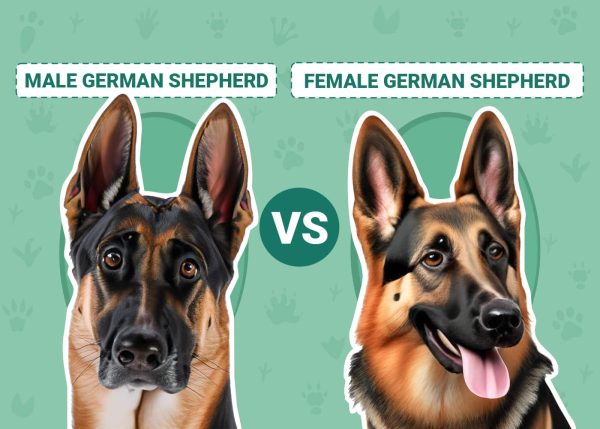Click to Skip Ahead
German Shepherds are one of the most popular dog breeds of all—and for many good reasons. These dogs are intelligent, fierce protectors with personalities that make them perfect for guard duties, police work, and companionship.
So, when it comes to the different genders, are there any notable differences? Of course! First, the size between males and females can vary quite drastically. Also, the overall character is mainly determined through breeding, but particular quirks can lean more towards one side than another. Let’s dive in.
Visual Differences
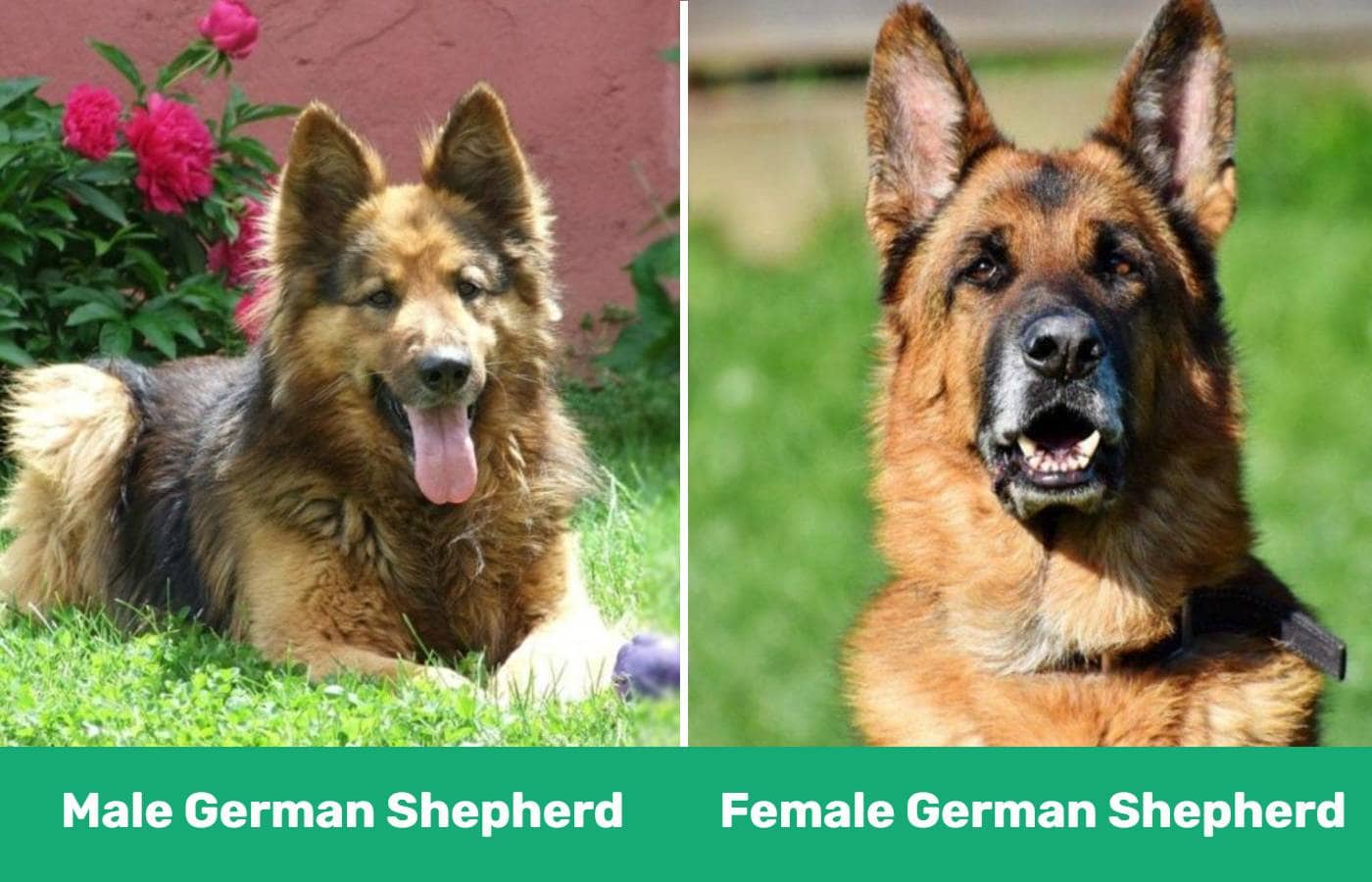
At a Glance
- Average height (adult): 24-26 inches
- Average weight (adult): 75-90 pounds
- Average height (adult): 22-24 inches
- Average weight (adult): 55-70 pounds
German Shepherds 101
German Shepherds are excellent canines that suit a variety of duties. Originally given tasks in guarding and herding, these dogs have also found themselves employed in several other categories.
Shepherds are some of the most talented breeds in the domesticated dog world, leading the blind, joining special task forces, and guarding facilities and homes alike.
These dogs have incredible body structures that are large with a sloping back. Although black and tan is the traditional coloration, they are available in various colors like sable, black, silver, and white.
Noble and agile, these great defenders take pride in everything they do—so they make terrific playmates for kids, hiking partners, guard dogs, and show dogs.
If you live in an apartment, you might want to check with your landlord before committing to this breed. Because of bite risks, German Shepherds are on the list of potentially dangerous breeds and sometimes require approval.
These dogs make such rewarding, intelligent companions—intensely loyal and pack-oriented. If you own your own home, you are free to explore this breed. But which gender would work best for your home?
Male German Shepherd Overview
Personality / Character
Male German Shepherds are usually intense and serious animals. They are incredibly sharp, taking note of everything going on around them. Because of their territorial nature and quickness to defend, they make fabulous watchdogs.
On the other hand, some male Shepherds may be a little more on the goofy side, playfully hanging out with their families. But even the most lighthearted males will defend their homes or humans when it’s warranted.
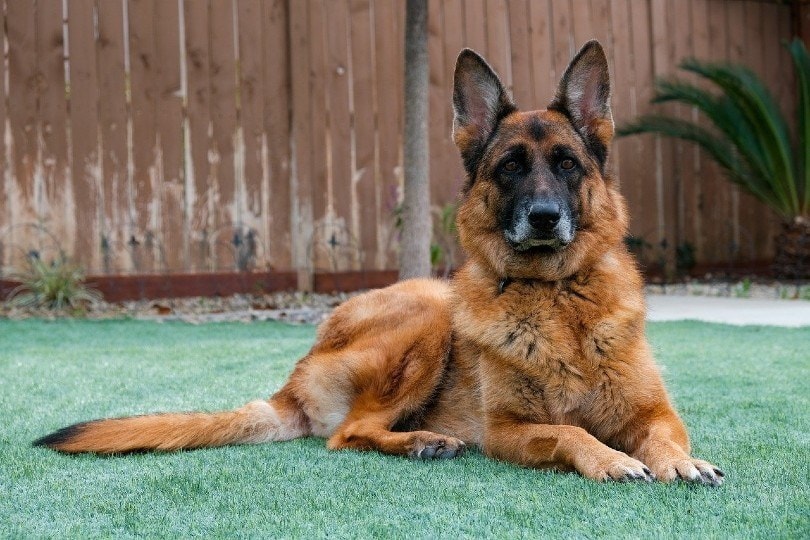
Training
Male German Shepherds are ideal training specimens. Alongside other dogs with impeccable agility, like the Belgian Malinois, they are skilled to sniff out bombs, narcotics and perform search and rescue work.
As a pet, these dogs work very well with basic training and pick up on commands. However, males are very sensitive about same-sex encounters, and there is a potential for a dominance struggle.
Male Shepherds also have a very high prey drive, which is an inborn instinct—not something that you can train out of them, so to speak.
Health & Care
Muddy breeding practices in their early days in the United States caused a whirlwind of bloodline health and temperament issues. Male German Shepherds are generally very healthy dogs, but the main concern among the breed is canine hip dysplasia.
Early testing is available through your veterinarian to determine if your dog will develop this condition later in life.
- Bloat
- Epilepsy
- Cataracts
- Allergies
- Thyroid issues
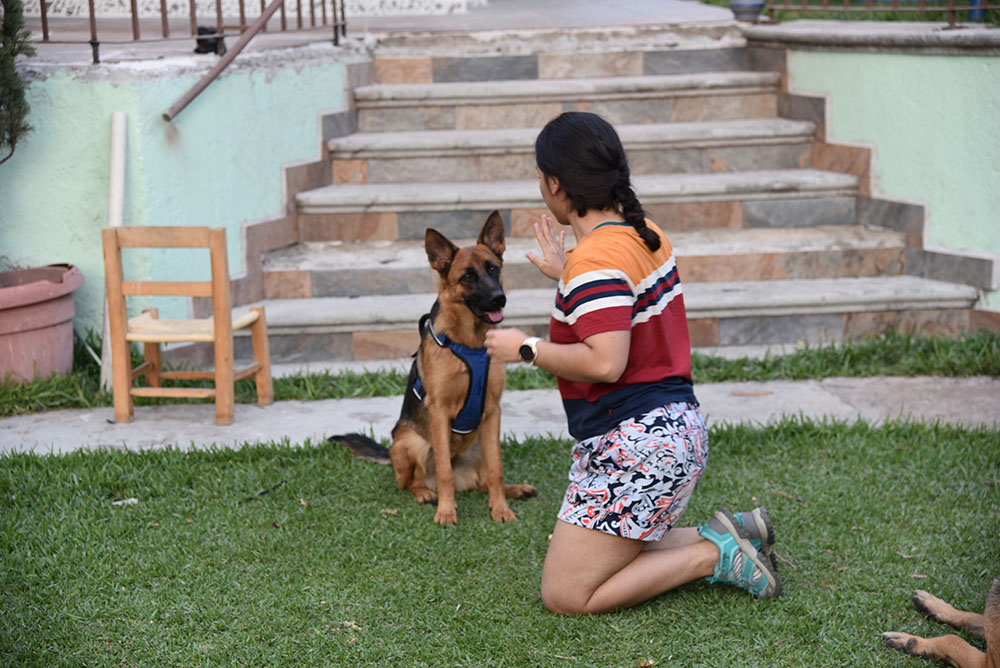
Breeding
Male German Shepherds can reproduce by 6 months of age, but they don’t reach full sexual maturity until they are between 12 and 15 months of age.
Once males reach the stage of full maturity, they can breed well into their senior years without issue.
- Perfect for guarding and service
- Larger than females
- Excellent judgment
- Can breed for a lifetime
- Can be aggressive
Female German Shepherd Overview
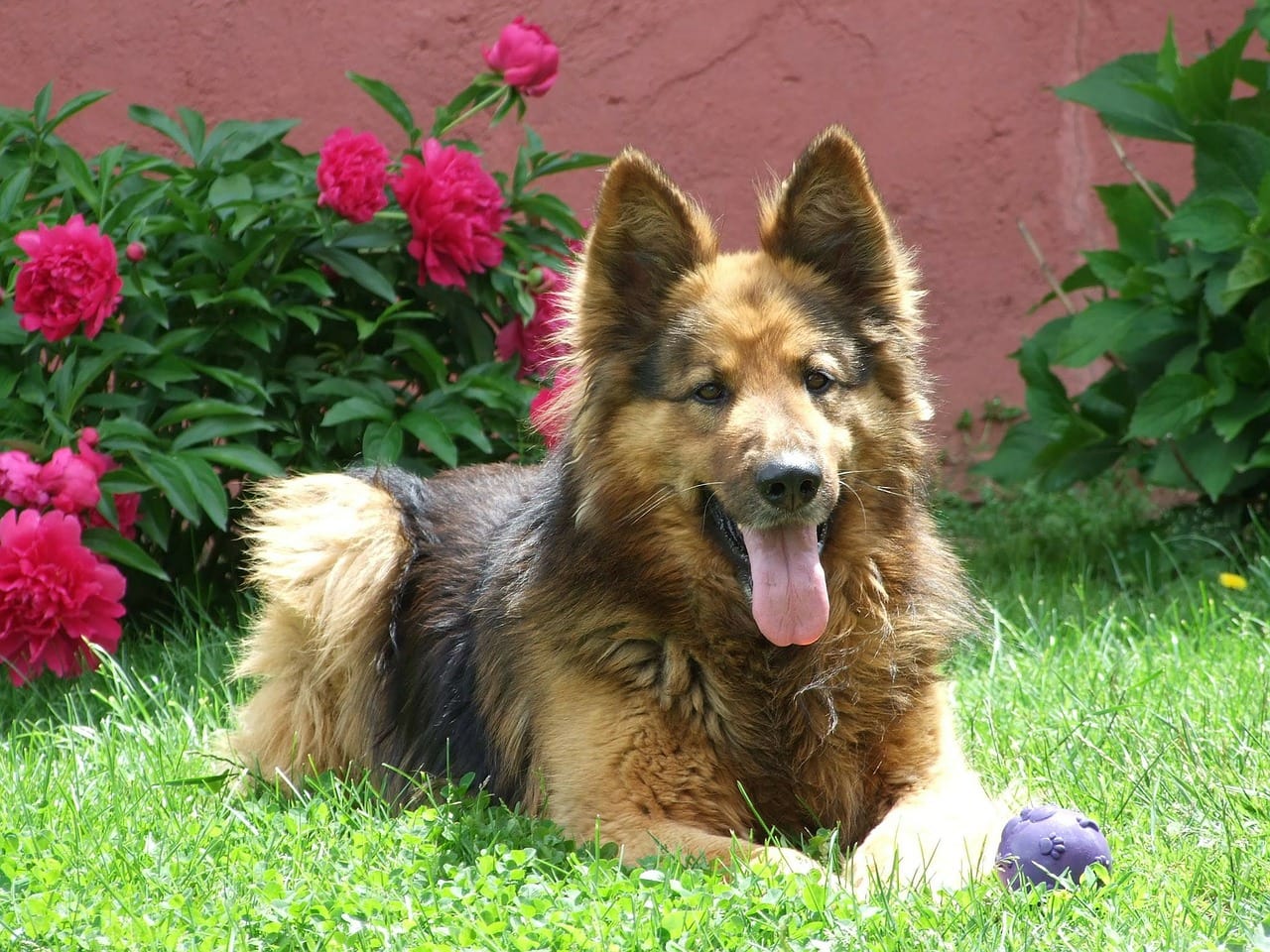
Personality / Character
Female German Shepherds tend to be gentler and doting than their male counterparts. Because they are softer, they often work very well in companion homes, living alongside children and adults of all ages.
Females tend to have excellent judgment when assessing strangers. They calmly and rationally analyze what goes on around their household and will defend it if need be. However, they aren’t as quick to jump on the defense as males of their kind.
Training
Traditionally speaking, male German Shepherds ruled the ranks in service. However, in recent years, females in work-related fields have risen dramatically. You can find female Shepherds favored because of their body structure.
Females are lighter than males, making them perfect for tasks that require dexterity. They also have excellent timing and command following skills, making them highly attentive and responsive.
As pets, female German Shepherds follow instructions easily, picking up on basic commands early.
Health & Care
Female German Shepherds are susceptible to all the same issues as males. However, spaying her too early might cause health problems to arise down the line, such as some reproductive cancers.

Breeding
Female German Shepherds, like most canines, start to sexually mature at six months. However, most breeders recommend waiting at least two years before breeding starts to ensure fully developed maternal instincts. Some even suggest three years to avoid potential rearing issues.
So that females don’t run into any health issues due to overbreeding, they shouldn’t have litters past 8 years old.
- Gentle
- Motherly
- Terrific character assessment
- Can get reproductive cancers
Which Breed Is Right for You?
Both male and female German Shepherds are stunningly impressive specimens with unique characteristics. Even though each one is more than capable of sporting its own personality, there are some notable differences.
Males tend to be more dominant, while females are generally agreeable. Both are used equally today in lines of service, although it used to be a male-dominated field. As companions, both genders could make a terrific addition to your home. Do you have a preference in mind?
Featured Image Credit: dendoktoor, Pixabay (top); Emer_Iglesias, Pixabay (bottom)


